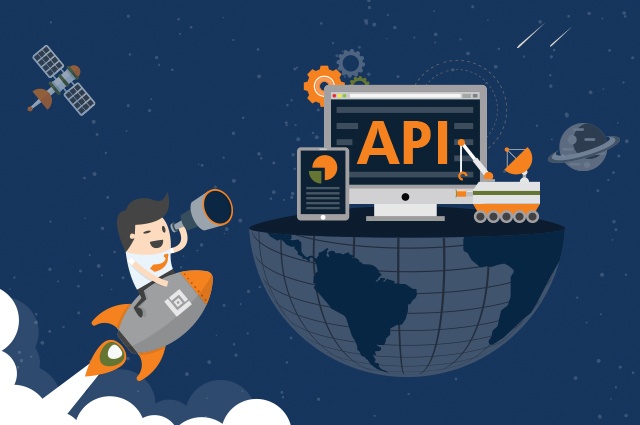
Collaboration is all about connectivity. Your users want to connect instantly with peers, ideas and data so that business processes stay on track and the creative development of business strategy is seamless.
That’s why collaboration software products are a must-have for every company across all industries. And this instant connectivity wouldn’t be possible without the successful integration of APIs.
When it comes to collaboration software, API testing is no longer optional. A comprehensive QA strategy must include a well-developed API testing framework to ensure that the security, functionality and performance of all APIs meets consumer expectation and product quality. In today’s market, anything less is unacceptable.
Developing a strong testing framework for your APIs means asking the right questions. For example, what are the reasons to test APIs? What challenges in API testing automation can your team anticipate? And what key focus areas in API testing are essential for testing your collaboration software?
What Should You Test APIs
Implementing an API testing framework is just as essential as GUI testing. After all, QA testing is about validating both the user interface of your collaboration products as well as its behind-the-scenes APIs that enhance the experience of your applications. By incorporating API tests into your testing framework, your team can expect these advantages of API testing within your product security and consumer engagement.
- Validating API Connections: APIs set up correctly are often the reason why your applications function as expected. And in this technology-driven world, your users expect APIs in your software applications to work 100% of the time. By running API testing automation within your QA practices, your team has a simpler, more convenient way to verify all API connections so that you maintain product performance and functionality with every market launch.
- Ensure Secure Data Exchanges between APIs: It’s up to your team to stay ahead of hackers who want access to your sensitive data, something that APIs exchange between applications. API security testing uncovers all vulnerabilities with your APIs so that your team can resolve any issues before deployment. From 2 factor authentication and identity tokens to encryption and rate limits,
- Data Validity: Your users expect accurate data returns upon every API interaction with your collaboration product. With data-driven API testing, your team can determine if any API allows invalid data or incorrect data during a requested exchange so that the defect can be fixed before deployment.
- Ensure Performance During Peak Load Times: The number of users accessing your software applications can affect the behavior of your APIs. By executing API load tests, your QA engineers can simulate virtual users to confirm that your products maintain reliability and responsiveness, even during high-traffic situations.
API Testing Challenges
While manual testing obstacles occur within the user interface, QA teams must overcome API testing issues within the API testing framework and business logic layer. As you can imagine, executing API test cases without dashboard access presents its own set of challenges for testing your collaboration products. With the right preparation, your team can overcome challenges in API testing when setting up your testing framework.
- Initial Setup Time: API testing, especially with test automation, can accelerate your testing process and accuracy in testing results. That unfortunately cannot be said for the time it takes to set up your testing infrastructure correctly for API testing. Not only can it be difficult to implement but it also can be a drain on team motivation. Make sure your team has enough setup time and be clear on the benefits they can enjoy once properly implemented.
- API Schema Preparation: Your QA team must maintain the schema—that is, the data formatting that handles both requests and responses for each API—throughout your testing process. Any update to your program can create additional parameters for the API calls which must be reflected in the schema configuration. Keeping track of what needs to be updated can get tricky fast, especially if everyone on your team is not aware of the recent change. To prevent this issue, set up a step-by-step process for whenever your program is updated to include a review of all API parameters.
- Sequencing APIs Correctly: For most effectiveness, API calls must appear in a specific order. For example, a user should receive an error if they request profile information before that profile is created. Keeping track of accurate sequencing can be challenging with an increase of various user scenarios within your application requiring API calls.
- Integration with Data Tracking Systems: This crucial step in setting up API testing unfortunately happens towards the end of the setup process when your team is likely fatigued and drained. The data tracking system plays a key role in APIs bringing back correct responses to users as well as passively monitoring API performance, so its integration deserves focused attention. Before beginning the process of setting up API testing, create a checklist with step-by-step guidance on integrating the data tracking system so that nothing is overlooked or missed.
Best API Testing Tools for Collaboration Applications
Automating API testing for your collaboration products starts by choosing the right API testing automation tool for your team, products and development cycle. When researching your options, we recommend that you consider these API testing tools for collaboration products.
- RapidAPI Testing: Creating and managing comprehensive API tests is now easily accessible with this API testing solution. QA engineers can run tests on any API (including SOAP, REST and GraphQL) for functional testing, performance testing, automated testing and API monitoring. RapidAPI Testing features CI/CD integration, unlimited test calls and real-time alerts via email and SMS.
- REST-Assured: Simplify testing REST service with REST-Assured. This API testing solution is perfect for teams already comfortable working in an open-source Java library that provides DSL for validating complex responses and writing strong, reusable API tests. REST-Assured features dozens of set-up functionalities and easy integration with Serenity automation framework.
- SoapUI: This API testing tool excels at functional testing for SOAP and rest testing. SoapUI is a great option for teams who want an easy way to create drag and drop API tests within a single test environment. QA testers can enjoy its easy-to-use graphical interface, its support of asynchronous testing and its support of custom workflows and functionalities.
- Katalon Studio: Its comprehensive end-to-end automation solution makes Katalon Studio one of the best API testing tools for both developers and testers. This solution stands out from the crowd with its capability of combining UI and API/Web services for multiple environments, including Windows, Mac and Linux. With Katalon Studio, QA testers can execute automated API tests across web platforms, desktop and mobile devices.
3 Key Focus Areas for Collaboration Products
Thanks to APIs, third-party integrations with your collaboration products allow for a simpler, faster user experience. Successful API integrations streamline access and usage, making it easier for you to remain competitive within the collaborative space and even expand your customer base.
That being said, your APIs require extensive testing to ensure proper functionality, performance and security with your software applications. When structuring your API testing framework, consider these 3 API testing focus areas crucial for collaboration-type applications:
-
Two Factor Authentication Methodology
The most common authentication mechanism used for API testing is 2 factor authentication, or Oauth2. During testing, a token is generated for the valid inputs of the user. If the prerequisites do not meet the required information, then the verification fails. A failed 2 factor authentication typically results in the blocking of the test account from the server for a specified amount of time. Successful authentication of a user produces an authentication token, allowing the tester to proceed and test the available functions of the API.
As you design 2 factor authentication tests, keep in mind these key considerations in API testing:
- the lifetime of the generated response (the length of time user is blocked from the server)
- the valid or invalid inputs in the request (the information provided by the user)
- the boundary conditions in the request
-
Workflows
Users rely on your collaboration application to support complex workflows and business scenarios. That’s why your QA team or your QA services provider should develop a testing framework designed for testing all API functions within these scenarios and actual workflows. This two-in-one approach to API testing verifies high-level functionality, saving you plenty of time for fixing defects.
-
API Testing Automation
APIs facilitate communication between your application and its web interface, including the modification or display of content. Manual testing requires moving between various interfaces to complete the test scenarios. API testing automation reduces testing errors and expedites your release cycle, especially when incorporated within a developed API testing framework that supports these scenarios.
Not sure how to integrate these key focus areas in API testing? Select a professional QA services provider like QASource as your partner. Our team of API testing experts specialize in API testing automation and running tests for the security, performance and functionality of all APIs. Our QA engineers can guide you through the API testing process so that your collaboration products are launched on time and error-free to market. Get in touch with a QASource expert today.



